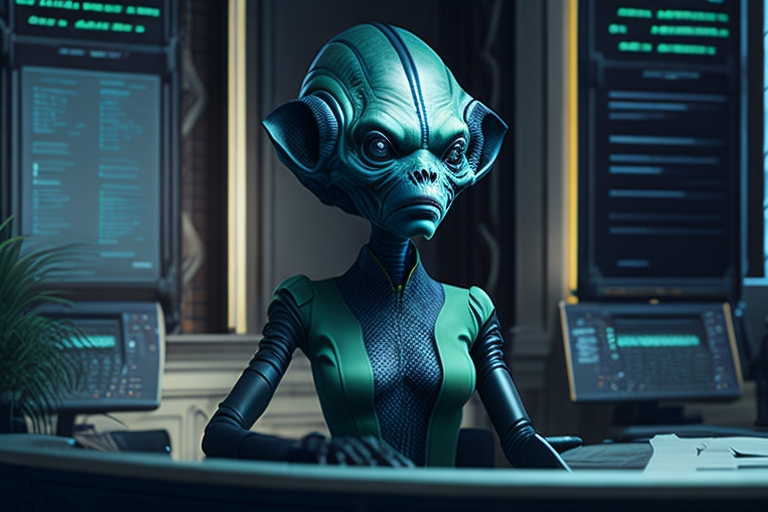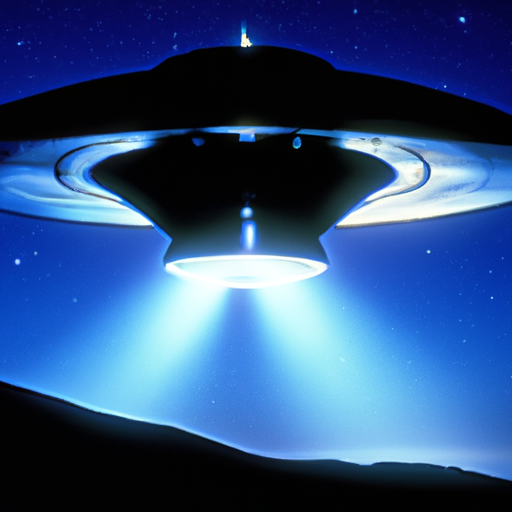US Astronaut UFO Cases – Donald “Deke” Slayton 1951
Hey there, fellow alien enthusiasts! Get ready to have your minds blown because I’ve got a story that’s out of this world. We’re talking about US astronaut Donald “Deke” Slayton and his mind-boggling encounter with a UFO way back in 1951. Strap in, because it’s about to get extra terrestrial up in here!
Picture this: It’s December 12, 1951, and good ol’ Deke is up in the sky, testing out a snazzy P-51 Mustang over Minnesota. But what starts off as your typical aircraft experiment takes a sharp turn when Deke spots something unusual.
This thing, whatever it is, is cruising along at a pace that leaves Deke in the space dust. And get this, it’s climbing at a forty-five-degree angle, like it’s casually strolling on a never-ending escalator to the stars.
Deke tries his best to catch up, but before he knows it, poof it vanishes into thin air, leaving him scratching his head and the folks on the ground rushing to calculate its speed.
Spoiler alert: it’s a whopping four thousand miles an hour! Talk about a need for speed. So, buckle up, folks, because this UFO tale is just the tip of the starship.
US astronaut Donald “Deke” Slayton on his amazing 1951 UFO encounter

Background information
Let’s delve into the fascinating story of US astronaut Donald “Deke” Slayton and his incredible UFO encounter in 1951.
Slayton, best known for being one of the original Mercury Seven astronauts, had a breathtaking aerial experience while testing a P-51 Mustang over Minnesota. This event, detailed in his autobiography “Deke!”, played a significant role in Slayton’s life and left a lasting impact on him.
Description of the encounter
During his flight, Slayton spotted an unidentified flying object in the sky. Initially, he assumed it to be a weather balloon, but as he closed in on it, he realized that it didn’t quite fit the bill.
Undeterred, Slayton decided to make a pass on the object, hoping for a closer look.
However, to his surprise, as he circled back, the object’s appearance changed dramatically. Rather than resembling a simple balloon, it now appeared as a saucer-like object perched at a 45-degree angle.
This unexpected transformation only heightened Slayton’s curiosity and desire to investigate further.
Speed and movement of the UFO
Slayton, an experienced P-51 Mustang pilot, compared the speed of the UFO to that of his aircraft. A P-51 Mustang typically cruised at a speed of 280 miles per hour. However, Slayton discovered that the UFO was able to maintain its speed even while climbing at a steep 45-degree angle.
To make matters even more astonishing, the ground crew tracking the object with a theodolite determined that it was traveling at an incredible speed of 4,000 miles per hour. The UFO’s ability to accelerate and climb at such speeds far surpassed anything Slayton had ever witnessed before.
Tracking the UFO
The ground crew played a crucial role in tracking the UFO’s movement. Utilizing a theodolite, a precision instrument commonly used in surveying and astronomy, they were able to monitor the object’s trajectory and calculate its speed.
The theodolite allowed for accurate measurements and computations, providing valuable data for Slayton and his team. The collaboration between Slayton and the ground crew created a comprehensive picture of the UFO’s movements, heightening the intrigue surrounding the encounter.

Slayton’s attempts to follow the UFO
As an experienced pilot, Slayton faced numerous challenges during his attempts to keep pace with the UFO. The limitations of his P-51 Mustang, equipped with an old piston engine, became apparent as the UFO effortlessly outpaced him.
Despite his best efforts, Slayton found himself unable to remain in close proximity to the object. The UFO’s climbing and accelerating abilities far exceeded the capabilities of Slayton’s aircraft, leaving him in awe of its otherworldly nature.
Change in appearance of the UFO
One of the most intriguing aspects of Slayton’s encounter was the sudden change in the UFO’s appearance. Initially resembling a weather balloon, the object transformed into a saucer-like shape when viewed at a specific angle.
This unexpected alteration further fueled Slayton’s fascination, prompting him to question the true nature of the object. The transformation from a mundane balloon to a saucer-like craft added an element of mystery to the encounter.

Lack of photographic evidence
Unfortunately, at the time of the encounter, Slayton did not have any gun camera film on board his aircraft. This meant that he was unable to capture photographic evidence of the UFO and its transformation.
The absence of visual documentation leaves room for skepticism among those who seek definite proof. Nevertheless, the vivid descriptions provided by Slayton and the ground crew lend credibility to the authenticity of the encounter.
Disappearance of the UFO
As Slayton continued to observe the UFO, it suddenly executed a breathtaking maneuver. The object climbed at an impressive 45-degree angle, accelerating rapidly until it vanished from sight.
Caught off guard by the UFO’s sudden departure, Slayton could only marvel at its incredible abilities. Once again, the limitations of his aircraft prevented him from pursuing the object any further, leading him to reluctantly return home.
Slayton’s return and conclusion
Following the encounter, Slayton returned to base, reflecting on the incredible experience he had just witnessed. The encounter with the UFO had a profound impact on his life and left him with more questions than answers.
Throughout his career as an astronaut, Slayton remained intrigued by the possibility of extraterrestrial life and the mysteries of the universe. His encounter in 1951 served as a catalyst, propelling him to further explore and contemplate the existence of UFOs and alien life forms.

Slayton’s thoughts on the encounter
Donald “Deke” Slayton spent the remaining years of his life fascinated by his UFO encounter. The experience left an indelible mark on him and led him to ponder the profound implications of the encounter.
Slayton strongly believed in the existence of UFOs and contributed to the field by sharing his encounter with the world. His willingness to speak openly about the extraordinary experience in his autobiography allowed others to consider the possibility of the unexplained and sparked a continued interest in the subject.
In conclusion, Donald “Deke” Slayton’s 1951 UFO encounter remains one of the most captivating stories in aviation history. The encounter challenged conventional explanations and sparked curiosity in the realm of unidentified flying objects.
While the lack of photographic evidence may fuel skepticism, Slayton’s detailed accounts and the corroborating data from the ground crew provide a compelling case for the existence of otherworldly aircraft. Slayton’s encounter would forever shape his views and ignite a lifelong passion for understanding the mysteries of the universe.
And for those seeking more information on UFOs and alien cases, you can visit UFO 420, a UFO blog that reports on the latest and most intriguing incidents. With claims of disclosure and the presence of aliens, UFO 420 offers a wealth of information for those interested in exploring further.
On December 12, 1951, you had an extraordinary aerial experience while testing out a P-51 Mustang in the skies over Minnesota. You described it in your 1995 autobiography, Deke!:
“I realized you weren’t closing on that son of a bitch. A P-51 at that time would cruise at 280 miles an hour. But this thing just kept going and climbing at the same time at about a forty-five-degree climb.
You kept trying to follow it, but he just left you behind and flat disappeared. The guys on the ground tracked it with a theodolite, and they’d computed the speed at four thousand miles an hour.”
(Donald (Deke) Slayton (1924-1993).

